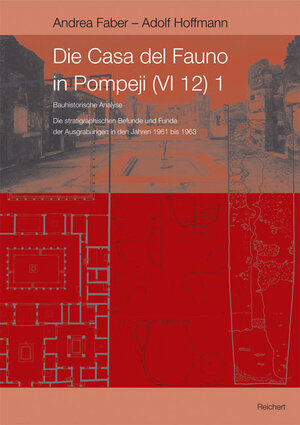
“In sum, this is a very important book that every library should possess. Some of its shortcomings, which certainly do not diminish the overall merits and significance of this book, may be resolved in the second volume that will hopefully appear very soon.”
Monika Trümper
In: Bonner Jahrbücher. 210/211 (2010/2011). S. 629-633.
------------------------------
“Excellement illustrée avec photos, plans, dessins, graphiques (disponibles également sous forme de DVD en annexe), cette publication est en tous points de vue exemplaire dans sa démarche (publication de fouilles anciennes) et dans sa réalisation.”
Jean-Robert Gisler
In: Museum Helveticum. 68 (2011) 1. S. 105.
------------------------------
“Instead of seeming incongruous, the juxtaposition of old and new in this volume is persuasive and demonstrates the value of good documentation to later generations of scholars. However long overdue, this publication of an old excavation of the Casa del Fauno gives this star attraction the methodical archaeological pedigree it deserves.”
Michele George
In: American Journal of Archaeology. 115.1 (January 2011)
http://www. ajaonline. org/pdfs/book_reviews/115.1/17_George. pdf
(4. Februar 2011)
------------------------------
“The (unfair) question some specialists will be tempted to ask, of course, is whether Faber and Hoffmann’s work lives up to the expectations raised by the long time it cost them to produce it. The response to that question must be twofold. On the one hand, the book will undoubtedly prove a highly valuable contribution to Pompeian debates for decades to come; on the other hand, as one might expect, the length of the process in the end turns out to be a handicap rather than a blessing (...)
The main contribution of the work lies in the detailed publication of the excavation finds. (...)
Yet, one should not be too unfair with this book. It is very easy to criticize its approach and methodology from a postmodern, early twenty-first century perspective. This book simply does not belong to the twenty-first century, and it should not be judged by its standards. It is important that the book is finally there, and we are already looking forward to the second volume. To be completely fair with Hoffmann and Faber’s work, one should approach it as a product of the 1980s. The methodology, the writing style and the way of engaging with scholarly literature all echo this recent past, when statistics had considerably more authority than they have now, literature was much less easily accessible, scholarly debates much more than nowadays were nationally oriented, and the dramatic upsurge in Pompeii studies of the last twenty years had not yet happened. One should not forget that the core ideas and methodologies behind the historical analysis presented in this book antedate Strocka’s publication of the “Casa del Labirinto” (1991) and Dickmann’s “Domus Frequentata” (1999) by a decade or more. Seen in this way, this book may be seen as one of those standard reference works, which today’s scholars do not always take at face value any more, but which they nevertheless use frequently because they most fully express a ‘traditional’ point of view, which is about to be challenged and refined. In that sense, the position of the book may be comparable to that of Jongman’s “Economy and Society of Pompeii,” or Mouritsen’s “Magistrates, Elections and Municipal Elite” (which both were published in 1988). In other words: finally, we have a fully expressed ‘traditional’ view on the history of the largest house of Pompeii. That is a great contribution to scholarship. Now, let’s use it, and challenge it.”
Miko Flohr
In: Göttinger Forum für Altertumswissenschaft. 13 (2010). S. 1165-1171.
http://gfa. gbv. de/dr, gfa,013,2010, r,15. pdf
(12. November 2010)





